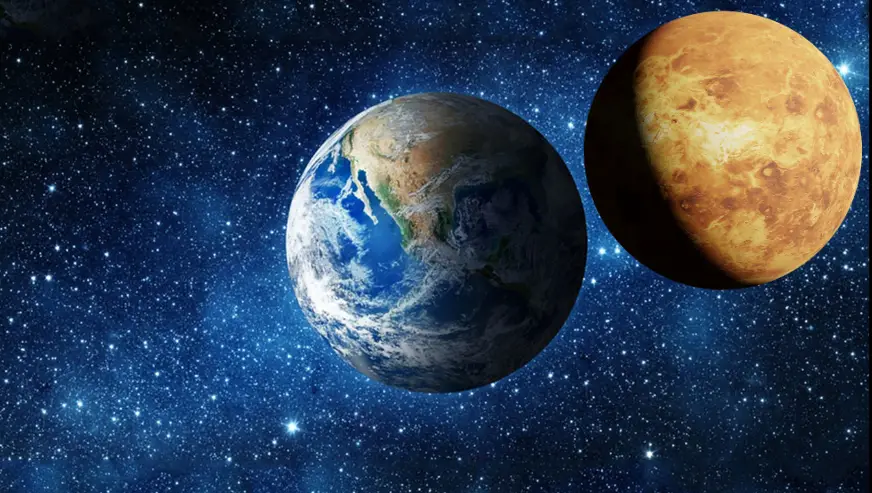Introduction
When we look up into the darkness of the night sky, there is a luminous celestial body that frequently draws our attention and captivates us with its presence. For a very long time, the planet Venus, which is the second planet from the Sun, has been considered to be Earth’s sister planet. This comparison is based on the fact that both worlds share a number of similarities, such as their dimensions, their make-up, and their general physical qualities. In this essay, we will investigate the various factors that contribute to Venus being referred to be Earth’s “sister planet.”
Size and Composition
Both the size and the composition of Venus are very similar to those of Earth, which is one of the key reasons why Venus is considered to be Earth’s sister planet. Both Earth and Venus are classified as rocky terrestrial planets, which indicates that they both have solid surfaces and are mostly made up of rocks including silicates. In addition, the size of both planets is relatively equal, with Earth being only little larger than Venus. The diameter of Venus is approximately 12,104 kilometers, making it nearly 95% as large as Earth.
Gravitational Forces and the makeup of the Atmosphere
Another noteworthy resemblance that exists between Earth and Venus is the gravitational forces and the makeup of the atmosphere on each planet. In spite of the fact that Venus has a gravity that is only marginally lower than that of Earth, it is nonetheless extremely considerable, which enables the planet to preserve its thick atmosphere. The majority of Venus’ atmosphere is made up of carbon dioxide (CO2), with smaller amounts of nitrogen and other gases also present. Venus is the warmest planet in our solar system as a result of its atmospheric composition, which causes a greenhouse effect when combined with its dense cloud cover.
Orbit and Rotation
As part of our solar system, both the Earth and Venus travel in an orbit around the Sun. The orbit of Venus, on the other hand, brings it into a little closer proximity to the Sun than that of Earth. Venus is notable for having an unusual retrograde rotation, which means that its axis of rotation is tilted at an angle relative to the rotation of the vast majority of other planets. Venus is the only planet in our solar system that spins in the opposite direction to that of Earth; this gives it a distinct identity among the other worlds that make up our solar system.
Comparable Characteristics of the Surface
When compared to Earth, Venus has a number of surface characteristics that are strikingly comparable to those of our home planet. Both planets are home to a wide variety of geological formations, such as mountains, valleys, plains, and impact craters. Both worlds are also home to life. Even Venus has volcanoes, the tallest of which is Maat Mons, which towers an incredible 8 kilometers (5.0 miles) above the surface of the planet. The existence of such features demonstrates the geologic activity that has occurred on both worlds and hints at a history of similar interior processes that have occurred on both.
Conclusion
Venus is sometimes referred to as Earth’s “sister planet” because of the numerous similarities between the two worlds. These similarities are what give Venus its nickname. Both Earth and Venus share significant similarities, from their sizes and compositions to their gravitational forces, atmospheric compositions, and surface features. Both planets are rocky and have thick atmospheres. However, it is essential to keep in mind that in spite of these similarities, Venus contains a severe and unfriendly environment, with a surface temperature that is high enough to melt lead and an atmospheric pressure that is approximately 92 times that of Earth. By gaining an understanding of Venus and the ways in which it differs from Earth, one can gain vital insights into the variety of planetary bodies that make up our solar system as well as the delicate balance that allows for the existence of life on our dear home planet.
![]()
